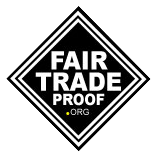
The coffee heartland communities of Bolivia, north of the city of Caranavi in the La Paz department was settled by Aymara natives in the seventies and eighties after having fled drought in their native Altiplano. Faced with the inaccessibility of the area, settlers came to be recognized as the pioneers of this remote wilderness, and are known for their strength and spirit of struggle, which continues to live on in today's younger coffee farming generations.
The Cooperativa Agricola Cafetalera San Juan is one of the oldest coffee growing cooperatives in Bolivia. The organization was formally constituted on December 26, 1974 in order to represent small farmer families in the area and support their development by pooling efforts through an integrated and sustainable cooperative development model.
Through the sustainable cultivation and commercialization of coffee, they aim to continue offering a viable means to a livelihood to their members. By maintaining strict guidelines in harvesting and processing, they have been able to offer an excellent quality product and develop markets in Belgium, Germany and the United States.
Harvest spans between the months of April and September, a time of the year when the hot days and cool nights allows for the optimal maturation and development of sweetness in the coffee cherry. At harvest, coffee is meticulously picked by hand, selecting the ripest cherries on the tree. Coffee is processed locally at farmers' household washing station and dried in raised drying tables. It is then collected in the cooperative's offices in the town of San Juan from where it gets trucked to La Paz for final export preparation.
Cooperativa Agricola Cafetalera San Juan Ltda
- FLO ID#: 899
- Organic Cert
Profile
- Total Bags Purchased: 1715
- Partner Since: 2015
- Founded: 1974
- Total Members: 36
- Total Hectares: 0.00
- Organic Members: 36
- Female Members: 8
- Avg Farm Size: 0.00 ha
- Organic Hectares: 0.00
- Harvest: April-September
- Elevation: 1200-1700 m
Varietals Grown:
- 80% Catuai
- 10% Castillo
- 5% Typica
- 5% Other
Social Premium Investment: 2018 Crop Year
Fair Trade Certification guarantees 20 cents/lb of the price paid a producer organization is set aside as a social premium. How this money is invested is a decision taken collectively by the general assembly of members at the end of each harvest. Below is a break down of how producers in this organization chose to spend their fair trade premium.
| 50% |
Improve Yields
Financing renovation of 1 hectare of land per member
|
